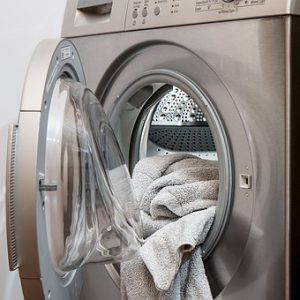What would happen to a new car that ran for ten years without a single oil change? Probably the same as a washer or dryer without proper maintenance.
The small gestures below will help keep your devices in good condition to reduce the risk of breakage and enjoy them as long as possible.
If you don’t do that, the appliance might break down. Your dryer would be struggling, and the appliance takes longer to dry thick fabrics.
Sometimes it even stops working before the end of the programmed cycle. In addition, it is abnormally hot and humid in the washing area.
When that happens, you will need a NYC dryer repair service. But first, prevention is always better than cure. So this is what to do to prevent a breakdown.
Avoid Large Loads
This is the most common mistake: many people overfill their washer! The weight of clothes is multiplied once they are soaked with water, especially sheets, towels, and jeans.
This load puts extra strain on all mechanical parts of the washer throughout the cycle and accelerates wear. Do two smaller loads rather than forcing one more piece into an overfull tub.
Use The Right Detergent, In Appropriate Amounts
Most front-loading washers require high-efficiency detergent. Be sure to follow the recommended quantity on the package to avoid overusing or soap residue damaging the unit.
Fight The Humidity
It is often at the level of the door seal that mold appears. When the washer is not in use, open the door and soap drawer ajar to let out moisture and prevent these kinds of problems.
Also, be sure to dry clothes as soon as a cycle ends: leaving damp fabrics in the tub too long creates an environment for bacteria.
Wash Your Washer!
Today’s models usually include a Maintenance cycle to flush the drum and ducts.
Use the instructions in your user guide. Vinegar also works well: do a load without clothes by pouring 2 cups of white vinegar into the soap dispenser once a month.
Complete the wash by cleaning the tub, the inside of the door, and the rubber gasket with white vinegar.
Clean The Filter Before Each Use
This small action is not to be taken for granted. In the United States alone, lack of maintenance is associated with approximately 15,000 dryer fires per year.
The cleaning of the filter contributes to your safety and facilitates the evacuation of the air, requiring less effort from the device.
Don’t forget to remove the lint that accumulates in the cavity where the part fits. Occasionally clean the filter in the dishwasher to loosen stubborn fabric residue.
Remember that your dryer includes a heating element, and no flammable products should be stored near or just above it.
Clear The Vent Cap and Clean The Duct
Make sure the outside vent cap is clear of any snow, vegetation, or debris. Once every two years, remove the flexible vent duct from the back of the dryer to clean the inside.
Most common malfunctions that can happen to your dryer include:
- Belt
The belt might not move as it should. Oh, it might even break. When this occurs, the drum might not spin appropriately (or at all), and laundry won’t dry in time.
- Resistance
The resistance is the heating part of the dryer. If this doesn’t work, the machine will not dry clothes.
- The Filter
Also called the lint filter. It prevents the fiber of the cloth to be circulating as it dries. If this is damaged, the fiber will obstruct the filter.
- Bearings
Bearings make rotation possible. If they are damaged, the machine won’t run. Or may make a shrill noise as it spins.
- Drain Pump
If the drain pump is faulty, the water will no longer drain.
- Capacitor
The capacitor’s job is to regulate the current in the dryer. If it is damaged, the engine won’t start after making a terrible sound.
Repairing a Damaged Dryer
Of course, you could repair the machine yourself if you can follow the instructions in the user guide. If that’s too technical, getting a Nyc dryer repair service member is your best route.
Thanks to Appliance Doctorx, you can hire certified dryer repair nyc based professionals for your jobs at good market costs.












